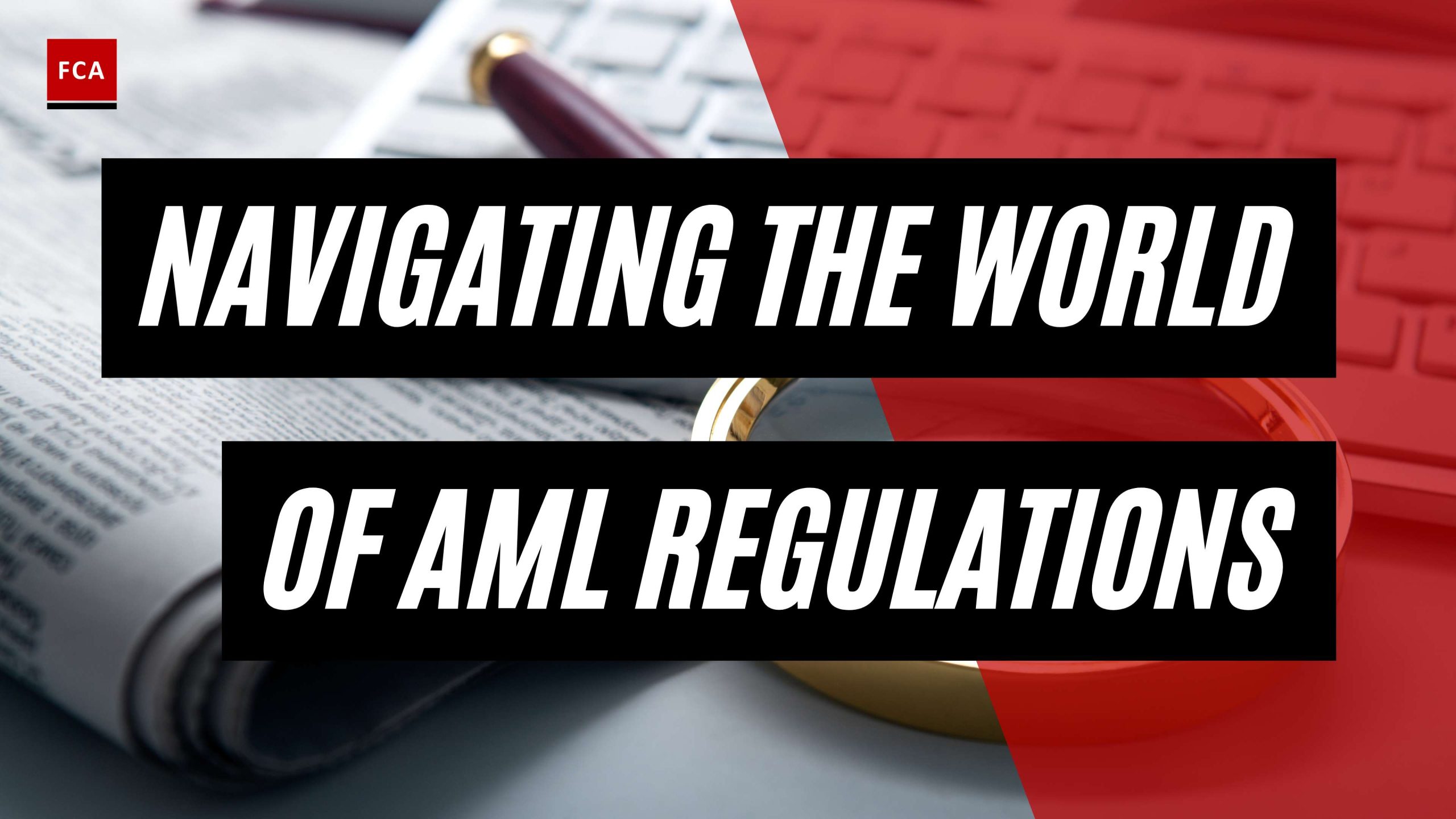Understanding AML Compliance Framework
To effectively combat money laundering and terrorist financing, financial institutions adhere to an Anti-Money Laundering (AML) compliance framework. This framework includes various laws and regulations, such as the USA PATRIOT Act and the Bank Secrecy Act (BSA). Additionally, one crucial aspect of the AML compliance framework is the implementation of Enhanced Due Diligence (EDD) measures.
Overview of USA PATRIOT Act and Bank Secrecy Act
The USA PATRIOT Act, passed in response to the 9/11 attacks, significantly strengthened the United States’ ability to prevent money laundering and combat financing of terrorism. It introduced various provisions that require financial institutions to establish robust AML programs, including the implementation of customer identification programs and the reporting of suspicious activities.
The Bank Secrecy Act (BSA), enacted in 1970, serves as the foundation for AML regulations in the United States. It requires financial institutions to keep records and file reports that can help identify potential money laundering or other illicit activities. Key reporting obligations under the BSA include Currency Transaction Reports (CTRs) and Suspicious Activity Reports (SARs).
Both the USA PATRIOT Act and the BSA establish the legal framework for AML compliance in the United States, providing authorities with the tools needed to detect and prevent financial crime.
Importance of Enhanced Due Diligence (EDD)
Enhanced Due Diligence (EDD) is a risk-based approach that goes beyond standard due diligence procedures. It involves gathering additional information and applying increased scrutiny when dealing with high-risk customers, such as politically exposed persons (PEPs), individuals from high-risk jurisdictions, or customers involved in high-value transactions.
The application of EDD measures is essential for financial institutions to mitigate the higher risks associated with these customers. By conducting thorough investigations and assessments, institutions can gain a deeper understanding of the potential risks they may face and take appropriate actions to prevent money laundering or terrorist financing.
EDD serves as a critical tool to ensure compliance with AML regulations and helps financial institutions protect themselves and the financial system from illicit activities. By implementing EDD practices, institutions can better identify and manage risks, demonstrate regulatory compliance, and contribute to the overall integrity of the financial system.
Understanding the AML compliance framework, including the USA PATRIOT Act and the Bank Secrecy Act, is fundamental for professionals working in compliance, risk management, anti-money laundering, and anti-financial crime. By integrating EDD measures into their AML programs, financial institutions can enhance their ability to detect and deter financial crime while maintaining regulatory compliance.
Enhanced Due Diligence for High-Risk Customers
When it comes to Anti-Money Laundering (AML) compliance, one of the critical components is enhanced due diligence (EDD) for high-risk customers. Identifying these high-risk customers and uncovering potential risks associated with their activities is paramount to mitigating financial crime and ensuring regulatory compliance.
Identifying High-Risk Customers
Identifying high-risk customers is a crucial step in implementing effective enhanced due diligence measures. While the specific criteria may vary depending on the industry and institution, there are common factors that contribute to the classification of a customer as high risk. These factors may include:
- Geographical considerations: Customers from jurisdictions with a higher risk of money laundering or terrorist financing activities.
- Business type: Customers engaged in high-risk industries such as money services businesses, casinos, or cryptocurrency exchanges.
- Politically exposed persons (PEPs): Individuals who hold prominent public positions or have close associations with politically exposed individuals.
- Adverse media: Customers with negative mentions in media reports or public records that raise suspicions of involvement in illicit activities.
By analyzing these factors, financial institutions can better understand the risk profile of their customers and prioritize enhanced due diligence efforts accordingly. It’s important to note that enhanced due diligence is an ongoing process and should be regularly reviewed and updated as new risks emerge.
The Art of Uncovering Risks
Uncovering risks associated with high-risk customers requires a combination of expertise, data analysis, and investigative techniques. The goal is to delve deeper into the customer’s background, transactions, and relationships to identify potential red flags that may indicate illicit activities. Some key aspects of the art of uncovering risks include:
- Data analysis: Utilizing advanced technologies and AML compliance software solutions, institutions can analyze large volumes of customer data, transactions, and patterns to identify anomalies and suspicious activities.
- Screening and sanctions checks: Conducting comprehensive screenings against relevant watchlists, such as those provided by regulatory bodies like the Financial Crimes Enforcement Network (FinCEN), to identify any potential matches with known criminals or terrorists.
- Enhanced investigative techniques: Employing enhanced investigative techniques, such as conducting interviews, requesting additional documentation, and collaborating with other institutions or law enforcement agencies, to gather more information and clarify any potential risks.
By combining these techniques and leveraging a risk-based approach, institutions can uncover potential risks associated with high-risk customers and take appropriate actions to mitigate those risks. It’s important to document the findings and maintain clear audit trails to demonstrate compliance with BSA/AML regulations.
In the next section, we will explore the key elements of enhanced due diligence, including customer identification and verification, enhanced ongoing monitoring, and source of funds and wealth assessment. These elements provide a comprehensive framework for conducting thorough due diligence on high-risk customers, ensuring regulatory compliance, and effectively mitigating financial crime risks.
Key Elements of Enhanced Due Diligence
To effectively mitigate the risks associated with high-risk customers, enhanced due diligence (EDD) incorporates several key elements. These elements ensure a thorough understanding of the customer and their activities. The three essential elements of enhanced due diligence are customer identification and verification, enhanced ongoing monitoring, and source of funds and wealth assessment.
Customer Identification and Verification
Customer identification and verification is a fundamental step in the enhanced due diligence process. It involves establishing the identity of the customer and verifying the information provided. This includes obtaining reliable and independent documents, data, or information to confirm the customer’s identity.
The process of customer identification and verification may include requesting documents such as passports, driver’s licenses, or government-issued identification cards. It is important to ensure that the identification documents are valid and not expired. Additionally, performing sanctions checks against various watchlists and databases helps identify any individuals or entities with potential connections to illicit activities.
Enhanced Ongoing Monitoring
Enhanced ongoing monitoring is crucial in maintaining awareness of the customer’s activities and detecting any suspicious or unusual behavior. Regular monitoring ensures that the risk profile of the customer is up to date and aligns with their expected transactional patterns.
Ongoing monitoring involves reviewing customer transactions, account activity, and conducting periodic risk assessments. This process allows for the identification and reporting of any unusual activities that may require further investigation. By implementing robust AML compliance software solutions, financial institutions can automate the monitoring process and reduce the risk of oversight.
Source of Funds and Wealth Assessment
To gain a comprehensive understanding of a high-risk customer, assessing the source of funds and wealth is essential. This involves conducting detailed investigations into the origin of the customer’s wealth, including their income, business activities, and investments.
The purpose of the source of funds and wealth assessment is to identify any potential links to illicit activities, such as money laundering or terrorist financing. By verifying the legitimacy of the customer’s financial resources, financial institutions can ensure compliance with currency transaction reporting requirements and other regulatory obligations.
In conducting this assessment, financial institutions may employ enhanced investigative techniques, such as forensic accounting, data analysis, and information gathering from public sources. This comprehensive approach helps to uncover any undisclosed or illicit sources of funds.
By incorporating these key elements into the enhanced due diligence process, financial institutions can effectively identify and mitigate the risks associated with high-risk customers. It is important to note that the level of due diligence should be commensurate with the customer’s risk profile, in accordance with BSA/AML compliance program requirements and Fincen regulations and guidance. Adhering to AML compliance best practices and maintaining a risk-based approach ensures the integrity of the due diligence process and contributes to the overall effectiveness of an institution’s anti-money laundering efforts.
Tools and Techniques for Enhanced Due Diligence
To effectively conduct enhanced due diligence (EDD) for high-risk customers, various tools and techniques are employed. These tools and techniques enable organizations to collect and analyze relevant data, conduct screening and sanctions checks, and employ enhanced investigative techniques.
Enhanced Data Collection and Analysis
Enhanced data collection and analysis play a crucial role in EDD. Organizations leverage advanced technologies and software solutions to gather comprehensive information about high-risk customers. This includes gathering customer identification data, transactional data, and other relevant information from various internal and external sources.
By utilizing data analytics tools, organizations can analyze this vast amount of data to identify patterns, anomalies, and potential risks. This enables them to gain deeper insights into the customer’s financial activities, relationships, and potential red flags. The analysis of data helps organizations in making informed decisions and detecting any suspicious or abnormal activities.
Screening and Sanctions Checks
Screening and sanctions checks are essential components of EDD. Organizations employ screening tools and databases to verify the identity of high-risk customers and check for any potential matches against watchlists, sanctions lists, politically exposed persons (PEP) lists, and other relevant databases.
These screening and sanctions checks help organizations identify if a customer is associated with any illicit activities, terrorism financing, money laundering, or other unlawful activities. By cross-referencing customer information against these lists, organizations can promptly flag and investigate any potential risks or concerns.
Enhanced Investigative Techniques
Enhanced investigative techniques are employed during the EDD process to uncover risks associated with high-risk customers. This involves conducting in-depth investigations, performing additional research, and utilizing various resources to gather information.
Organizations may employ techniques such as open-source intelligence (OSINT) gathering, which involves analyzing publicly available information to gain insights into the customer’s activities and associations. OSINT can provide valuable information that complements the data collected internally.
In addition, organizations may collaborate with external investigative agencies, financial intelligence units, or law enforcement agencies to gather information or seek assistance in complex cases. These partnerships can enhance the effectiveness of EDD by leveraging external expertise and resources.
By utilizing these tools and techniques, organizations can strengthen their EDD processes and effectively mitigate risks associated with high-risk customers. However, it’s important to note that implementing these tools and techniques may require investing in AML compliance software solutions and ensuring that the necessary AML training and awareness is provided to the relevant personnel. It’s crucial for organizations to stay up to date with FinCEN regulations and guidance and follow AML compliance best practices to maintain a robust BSA/AML compliance program that aligns with a risk-based approach to AML compliance.
Benefits and Challenges of Enhanced Due Diligence
Enhanced due diligence (EDD) plays a vital role in mitigating risks associated with high-risk customers. While it brings several benefits to financial institutions and other businesses, it also presents operational challenges and cost considerations. Let’s explore the advantages and potential hurdles of implementing enhanced due diligence.
Enhanced Risk Mitigation
One of the primary benefits of enhanced due diligence is its ability to enhance risk mitigation efforts. By conducting thorough investigations and gathering additional information on high-risk customers, businesses can better understand the potential risks they pose. This enables them to make informed decisions and implement appropriate risk management strategies.
Through enhanced due diligence, financial institutions can identify red flags, such as suspicious transactions or connections to illicit activities. This proactive approach helps prevent money laundering, terrorist financing, fraud, and other financial crimes. By detecting and preventing these risks, businesses can safeguard their reputation and maintain compliance with regulatory requirements.
Operational Challenges and Cost Considerations
Implementing enhanced due diligence can present certain operational challenges and cost considerations. The additional time and resources required to conduct in-depth investigations and gather comprehensive customer data can increase the workload for compliance teams. This can lead to delays in onboarding high-risk customers and can impact the overall efficiency of the due diligence process.
Moreover, the cost of implementing enhanced due diligence measures can be significant. Businesses may need to invest in advanced technology, such as AML compliance software solutions, to streamline data collection, analysis, and monitoring processes. Additionally, training and awareness programs, as well as the hiring of specialized personnel, may be necessary to effectively carry out enhanced due diligence procedures.
Despite these challenges, the potential consequences of not implementing enhanced due diligence can be far more detrimental. Non-compliance with regulatory requirements can result in hefty fines, reputational damage, and legal repercussions. Therefore, businesses must carefully assess the costs and allocate resources to ensure effective implementation of enhanced due diligence measures.
In summary, enhanced due diligence provides significant benefits in terms of risk mitigation and compliance. By conducting thorough investigations and gathering comprehensive customer data, businesses can better understand and manage the risks associated with high-risk customers. While implementing enhanced due diligence may pose operational challenges and incur costs, the long-term benefits far outweigh the potential drawbacks. Taking a risk-based approach and investing in the necessary resources and technology can help businesses achieve effective risk management and maintain regulatory compliance.








